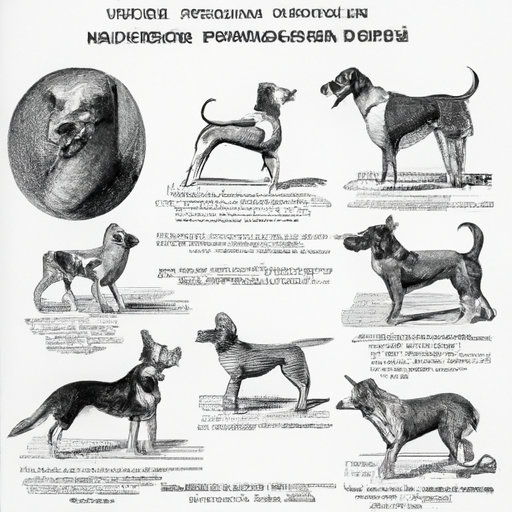Dogs, beloved by many, are far more than just domestic pets. They are our loyal friends, companions, and protectors. Their world is fascinating, filled with intriguing facts and heartwarming traits. Whether you’re a long-time dog owner or a budding enthusiast, it’s always enlightening to learn more about these charming creatures.
- Table of Contents
- Anatomy and Physiology of Dogs
- Dog Breeds and Their Characteristics
- Dogs and Human Society
-
Frequently Asked Questions
-
Key Takeaways
- Dogs have unique physical characteristics that set them apart from other animals.
- There are numerous dog breeds, each with its own unique traits and temperament.
- Dogs play a crucial role in human society, providing companionship, security, and even therapeutic benefits.
Anatomy and Physiology of Dogs
Dogs have been molded by their environment, both natural and human. Over centuries, they’ve evolved into the diverse and adaptable species we know today.
One of the most fascinating aspects of a dog’s anatomy is their acute sense of smell. Dogs have up to 300 million olfactory receptors in their noses, compared to humans who have about 6 million. This makes their sense of smell anywhere from 10,000 to 100,000 times more acute than ours. A dog’s sense of smell is so powerful that they can detect certain diseases like cancer, even before they can be diagnosed using medical equipment [^1^].
Their hearing is also impressive. Dogs can hear frequencies ranging from 40 Hz to 60,000 Hz, while humans hear between 20 Hz and 20,000 Hz. This may explain why your dog barks at the vacuum cleaner or other appliances—they hear these devices emitting high-frequency noise.
Their coat, or fur, serves to protect them from various environmental conditions. Some breeds have double coats for extra insulation in cold climates, while others have a single layer of hair to keep them cool in hot environments.
It’s also fascinating to note that dogs have a third eyelid, known as the haw. This extra protective layer helps keep their eyes moist and protected from debris.
Dog Breeds and Their Characteristics
There are approximately 340 dog breeds recognized by various international kennel clubs. This number doesn’t include the countless mixed breeds and variations that exist worldwide [^2^].
Each breed has unique traits and characteristics, often bred for specific purposes. For instance, Border Collies are renowned for their intelligence and agility, traits that make them excellent herding dogs. Conversely, St. Bernards are known for their strength and endurance, attributes that make them ideal rescue dogs in the snowy Alps.
Here is a table summarizing a few popular dog breeds and their characteristics:
| Breed | Origin | Purpose | Characteristics |
|---|---|---|---|
| Labrador Retriever | Canada | Hunting, retrieving | Friendly, outgoing, even tempered |
| German Shepherd | Germany | Herding, guarding | Intelligent, confident, courageous |
| Beagle | England | Hunting | Merry, friendly, curious |
For more information on specific breeds, check out this comprehensive guide.
Dogs and Human Society
Dogs have played a vital role in human society for centuries. They provide companionship, assist in hunting and herding, and offer protection. In recent years, their role has expanded to include therapeutic and medical assistance.
Therapy dogs are used in various settings, from hospitals to schools, providing comfort and reducing stress and anxiety. Service dogs are trained to perform specific tasks for people with disabilities, enhancing their independence and quality of life.
Moreover, dogs have been shown to have numerous health benefits for humans. Owning a dog has been linked to lower blood pressure, reduced cholesterol, and decreased stress levels. The act of petting a dog can increase levels of the stress-reducing hormone oxytocin and decrease production of the stress hormone cortisol [^3^].
For more insights on dogs and their impact on human health, explore this article.
Frequently Asked Questions
- Why do dogs wag their tails?
Tail wagging is a form of communication. Generally, a relaxed, wagging tail signifies a happy and friendly dog. However, the direction and speed of the wag can also indicate different emotions.
- Can dogs see colors?
Dogs aren’t colorblind in the sense that they see only black and white. However, their color perception is limited compared to humans. They see colors on a blue and yellow scale but cannot distinguish between red and green.
- Why do dogs pant?
Dogs pant to regulate their body temperature. Unlike humans, dogs don’t sweat through their skin. Panting allows them to evaporate moisture from their tongues and upper respiratory tract, dissipating heat and cooling down.
Whether you’re a seasoned dog owner or considering getting your first pup, understanding these facts about dogs can help you appreciate these wonderful animals even more. They are not just pets, but friends, family, and sometimes even our lifelines.
For more intriguing insights about dogs, check out this page.
[^1^]: American Kennel Club: Dogs and their sense of smell
[^2^]: World Canine Organization
[^3^]: Centers for Disease Control and Prevention: Health Benefits of Pets



